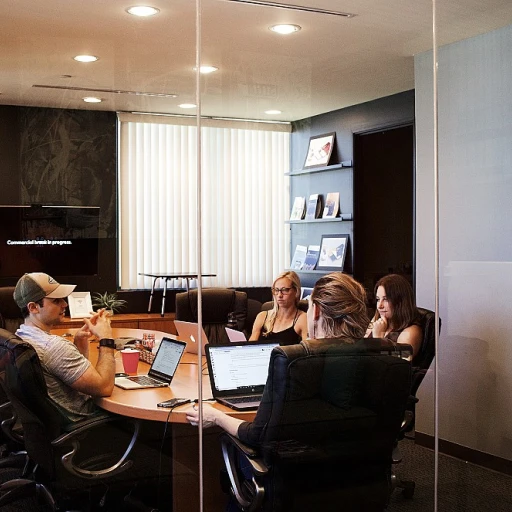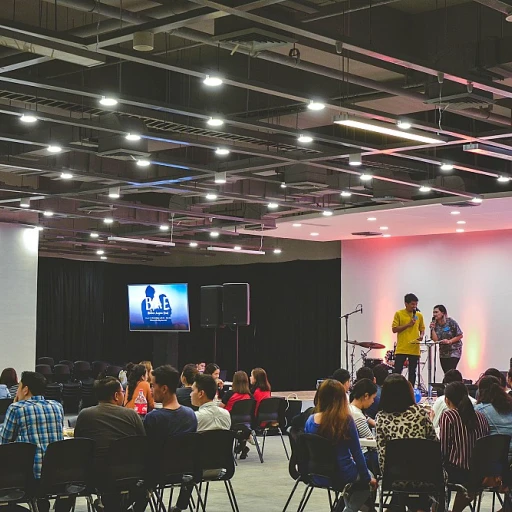
Understanding the Need for Remote Employee Monitoring
The Importance of Monitoring in the Remote Work Era
In today’s rapidly evolving business landscape, remote work has become a mainstay. While it offers flexibility and convenience for employees, it also presents unique challenges for management. Monitoring remote employees effectively is vital to ensure that productivity is maintained, and sensitive data breaches are prevented. Understanding the need for comprehensive monitoring arises from the multiple dimensions it encompasses. It's not just about keeping an eye on employee activities but ensuring data security and compliance with privacy regulations as well. Given the rise in data breaches and the potential for insider threats, closely monitoring work-related activities can mitigate risks of data leaks. Further, tools like sophisticated monitoring software and real-time tracking provide management with valuable insights into how employees spend their time and use company resources. These insights can help optimise workforce management strategies, helping in identifying any gaps in productivity or security measures. Establishing best practices in employee monitoring involves training staff and creating awareness programs that emphasize the importance of data protection and privacy. This approach not only enhances compliance but also foster a culture of security-consciousness among remote workers. For those interested in enhancing their current practices or starting their journey into remote worker supervision, looking into a comprehensive guide on improving management efficiency can be a valuable resource.Balancing Privacy and Productivity
Finding the Right Balance Between Privacy and Productivity
In the era of remote work, striking a balance between employee privacy and productivity is more crucial than ever. Employers need to ensure that performance remains high while respecting individual privacy rights during data protection practices. This balance can be challenging, especially when it comes to implementing monitoring tools that track employee activities. To navigate this delicate work balance, companies should integrate monitoring software and tracking practices that monitor employee activities without infringing on their personal space. Implementing transparent policies and clearly communicating the purpose of monitoring can help employees understand how it enhances data security and productivity. Many businesses focus on maintaining remote work compliance by setting clear expectations for employees. Monitoring software can collect data on active time and risk prevention practices, ensuring that company resources are being used efficiently. However, it is essential to handle sensitive data with care to prevent any insider threat that might lead to data leaks or breaches. One effective approach to balancing privacy and productivity is being transparent about the data collected and its intended use. Regularly updating employees on how their performance is evaluated and how data is used for improving work conditions can foster trust and enhance workforce management. Managers should also consider adopting best practices for monitoring to avoid over-surveillance. Incorporating real-time tracking options only when necessary, and comprehensive guidelines for usage can aid in maintaining employee morale. For more insights into streamlining company practices and boosting efficiency, you might want to explore how businesses are optimising customer relations and supply chain efficiency here. Balancing these elements is key to achieving a risk reduction strategy while respecting individual privacy. Employers can thus foster an environment where employees feel both protected and valued, ultimately maintaining a productive remote workforce.Technological Solutions for Employee Tracking
Harnessing Technology for Remote Workforce Insights
In today's evolving remote work landscape, technology serves as a critical component for managing and monitoring remote employees effectively. This transition necessitates the use of advanced monitoring software and tools that accommodate both productivity and security concerns. Utilizing these technological solutions offers a comprehensive approach to employee monitoring, allowing management to gain insights into employee behavior without infringing on privacy.- Monitoring Software: Employing monitoring software can provide real-time data on employee activities, helping to assess productivity levels and ensure time tracking compliance. These tools typically offer features like activity logging, application usage tracking, and even screen capture capabilities.
- Data Security Tools: To protect sensitive data, organizations should leverage data protection tools that prevent data leaks and manage information security risks. Such software ensures that employees adhere to data security practices, reducing the likelihood of breaches and insider threats.
- Employee Productivity Tools: In addition to tracking, technology can boost productivity by offering project management and collaboration applications. These tools facilitate efficient work processes and enhance communication among remote workers, aligning with overall business goals.
Implementing Data Leak Prevention Measures
Strengthening Defence with Robust Data Security Measures
In the realm of remote work, safeguarding sensitive data is of paramount importance. Ensuring robust security involves deploying effective data leak prevention measures. One of the most essential practices in achieving this is the implementation of monitoring tools that offer real-time insights into employee activities. These tools not only protect against potential data breaches but also enhance productivity by identifying inefficiencies. Monitoring software plays a crucial role in risk management by detecting possible insider threats. This proactive approach ensures that vulnerabilities are addressed before they lead to data loss. Moreover, comprehensive monitoring solutions help maintain data compliance, meeting both legal and organizational standards. Incorporating best practices, such as time tracking and secure data storage, further fortifies data protection across the workforce. These measures, when integrated with existing security frameworks, act as a bulwark against data leaks. Additionally, regular evaluation of these prevention strategies ensures that the balances between employee privacy and management oversight are maintained. By staying informed about the latest advancements in security technology, organizations can continuously enhance their data protection initiatives and safeguard sensitive information effectively. Empowering management with these tools creates a resilient environment where remote workers can perform at their best without compromising data integrity.Training and Awareness Programs
Building Awareness and Fostering a Security-Conscious Culture
Creating a culture where employees understand the importance of data protection is crucial to minimizing risk related to data breaches and loss. By integrating thorough training and awareness programs, you can ensure that all team members are equipped with the necessary knowledge and skills regarding data security and remote work best practices.- Comprehensive Training Sessions: Regularly scheduled training sessions focusing on data protection, privacy, and security protocols can help solidify good practices. Cover the use of employee monitoring software, highlighting its role in augmenting productivity and security.
- Hands-On Workshops: Interactive workshops that simulate potential data breach scenarios can be an effective way for employees to practice how to handle real-time situations. Allow remote workers to familiarize themselves with the tools and software used for tracking and prevention.
- Policy Awareness: Clearly communicate the company's policies on employee monitoring, time tracking, compliance, and data protection. By doing so, everyone is aware of the expectations and the role they play in maintaining security and productivity.
- Continuous Education: Implement a system of ongoing education to keep staff updated on the latest technologies and best practices in data security. Utilize newsletters, webinars, or e-learning platforms as convenient ways to reach remote employees.
Evaluating the Training's Effectiveness
Once these programs are in place, it's essential to regularly assess their impact on the organization's security stance and productivity levels. Keeping track of key metrics such as the frequency of data leaks or security incidents can provide valuable insights into the efficacy of your training efforts. Moreover, gathering feedback from employees can help identify areas requiring improvement or additional focus. An anonymous survey can be an excellent tool for this purpose, allowing remote employee input without compromising privacy. Through continuous evaluation and adaptation, a comprehensive guide for insider threat protection and productivity enhancement can be crafted, tailoring strategies to the unique needs of your workforce management.Evaluating the Impact of Monitoring and Prevention Strategies
Assessing the Effectiveness of Monitoring Strategies
Evaluating the impact of monitoring and prevention strategies is crucial for ensuring that the measures in place are both effective and respectful of employee privacy. Regular assessments help in identifying any gaps in the current system and provide insights into how these strategies can be improved. Here are some key areas to focus on:
- Data Security and Protection: Regular audits of data security protocols can help in identifying potential vulnerabilities. This includes assessing the effectiveness of data leak prevention measures and ensuring that sensitive data is adequately protected against breaches.
- Employee Productivity: Monitoring tools should enhance productivity without infringing on privacy. It's important to analyze whether the tracking and time management software are contributing positively to the workforce management.
- Compliance and Risk Management: Ensuring compliance with data protection regulations is essential. Regular reviews can help in mitigating risks associated with data loss and insider threats, ensuring that the company remains compliant with legal standards.
- Feedback from Remote Workers: Gathering feedback from employees about the monitoring practices can provide valuable insights. This helps in balancing the need for monitoring with the employees' need for privacy and trust.
Continuous Improvement and Best Practices
Implementing a cycle of continuous improvement is vital. By regularly updating monitoring tools and practices, companies can stay ahead of potential threats and enhance their data security measures. Adopting best practices in employee monitoring ensures that the company not only protects its data but also maintains a positive work environment for remote employees.
Ultimately, the goal is to create a comprehensive guide that aligns with the company's objectives while safeguarding both the organization's and employees' interests. By doing so, businesses can effectively manage their remote workforce and prevent data breaches in real time.













